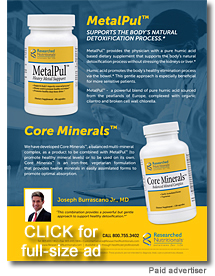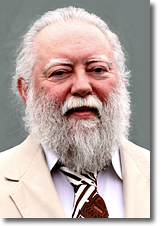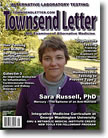Page 1, 2
When mineral transport is somewhere between normal and deranged, you get to play the odds as to whether mercury is present at toxic levels, and if the other toxic element section results are meaningful or not.14
Other laboratory evaluations are often abnormal in the presence of mercury and certain other heavy metal toxins. These are moderate elevations of blood and urine porphyrins, serum lactate and pyruvate, urine pyrroles, total cholesterol, ALT, and MCV. Antimony, mercury, and lead will sometimes produce low testosterone in men. When it is due to mercury, LH and FSH go down; when it is lead, they go up. Arsenic sometimes causes anemia.
When hair mercury is high in the presence of the signs and symptoms of mercury poisoning, you don't have to worry about counting; but it is still often valuable in providing confirmation of the actual toxic effects of the mercury.
There are some characteristic patterns commonly seen in mineral transport derangement. One is the mostly low presentation, satisfying the second rule above. In these tests the toxic elements typically are also very low, and a high one likely is significant. Just as the low essential elements do not accurately reflect body inventory, neither do the low levels of toxics guarantee their absence from the body. The patient has mercury and may or may not have other toxic elements.
Tests that satisfy the first rule have four or more essential elements with exceptionally high or low levels in hair, but not in the body itself. Thus, very high toxic element levels in hair likely do not mean toxic amounts are present.
Reference ranges are necessarily determined from a sample of the population in question – the entire human race. Random and nonrandom errors are necessarily present. One understandable nonrandom error is the failure to select subjects uniformly distributed around the globe. Thus, Doctor's Data uranium ranges are valid for people in the US Southeast, Midwest, and many other locales. In the coastal US Pacific Northwest hair lithium is always the low red range. People from the US Southwest, areas near Bankok Thailand,15 and many other locales will as a rule have the uranium bar half way across the red zone. Near Bankok hair zirconium is in the red low (below 2.5%ile) range about 70% of the time. This is normal for those subpopulations.
As with any test, there are false normals. These are most likely tooccur in a patient who was intoxicated many years ago and has not been exposed since. This goes with ahistory of rapid but long-past disease onset and relatively constant severity since: e.g., an autistic child aged 8 or over, or a schizophrenic person in their 30s who has not worsened since diagnosis at age 16. False positives are rare.
Any health care practitioner using hair tests needs to look at a large number from their local area to ensure they understand which results do not correspond to laboratory provided ranges. Those needing to look over hair tests on people from a variety of locations may view a sample on the web.16 These are all people with chronic illness of the sort alternative practitioners treat, not a cohort of healthy people.
 Dramatic high results may also occur due to contamination. Many dandruff shampoos contain selenium sulfide – indeed one, Selsun Blue ® , is named for it. This leads to wildly elevated hair selenium that has no significance. Similarly for those who use zinc-containing shampoos. Bismuth elevations are often contamination from make-up. Cadmium is also a frequent contaminant. Dramatic high results may also occur due to contamination. Many dandruff shampoos contain selenium sulfide – indeed one, Selsun Blue ® , is named for it. This leads to wildly elevated hair selenium that has no significance. Similarly for those who use zinc-containing shampoos. Bismuth elevations are often contamination from make-up. Cadmium is also a frequent contaminant.
The source of high hair barium is occasionally medical use as an X-ray contrast agent. Most of the time, it is a demonstration of basic chemistry. Cogeners are elements in the same column of the periodic table that have similar chemistry. Magnesium, calcium, strontium, and barium are one set of cogeners. In tests where Ca, Mg, and Sr are very elevated, Ba usually is as well. It is not present in the body at high levels in this case.
Due to the difficulty in establishing ranges, some toxic elements almost always appear at very low levels. These are beryllium, platinum, thallium and thorium. It is unusual to see bars for these at all.
A lack of appreciation of mercury-induced mineral transport derangement has led to a confused body of literature. For example, a very common presentation of the first rule where elements take on extreme values is for manganese, lithium, and cobalt to be very low. Studies have noted low manganese in autism,17 and an association of both high AND low hair manganese with ADHD.18
Mercury increases liver cancer modestly and likely also ovarian cancer.19 Thus, whether the low manganese in breast cancer20 is due to an actual manganese deficiency or mercury-induced mineral transport derangement is an interesting question.
A common effect of mercury-induced mineral transport derangement is high hair and body aluminum at ordinary exposure levels. Autistic children have high aluminum.21
Seventy-four percent of autistic children respond to chelation,22 and 75% of hair tests from autistic children satisfy the counting rule criteria for mercury toxicity.23 Those autistic children with rule-positive hair tests invariably respond to chelation; those with rule-negative tests usually do not. It seems likely that the studies on autism cited above have confused an effect of mercury poisoning with a cause. It is not unreasonable to suspect breast cancer and ADHD may be similar.
Few will see hair tests on random population samples. I have been able to view four different sets of these and to retain and analyze the data from three. Data from Thailand and North Carolina are very similar in terms of correlation between hair levels of the various elements. Both show the following characteristics: there is little correlation between the elements other than what one would reasonably expect between the cogeners Na K Rb and, separately, the cogeners Mg Ca Sr Ba moving together. Zirconium and aluminum, which have similar chemistry, also move together. Cobalt, barium, and manganese also move together, as do bismuth and iodine. Cadmium and zinc strongly anticorrelate. A relatively small number of element groupings move together. The 'counting' approach was derived assuming no significant correlations, which turns out to be valid.
Control children in an autism/controls study regarding hair test results showed about 25% of controls (as opposed to 75% of autistics) met a counting rule. This is in good agreement with the incidence of ADHD, asthma and allergies among similarly aged children at that place and time.23
Medical students in North Carolina showed about 40% met a rule.24 About 40% of students at a private college in Bangkok also satisfy a rule. These are in reasonable agreement with the health histories of the medical students and the high pollution levels of Bangkok.
The typical use of a challenge test, or a hair test, is to convince the patient and physician that differential diagnosis has arrived at the correct answer: i.e., is someone diabetic, or is their diabetes due to mercury exposure earlier in life?25 A properly interpreted hair test permits a large number of rule-outs to be conducted economically.
Page 1, 2
Notes .pdf
Financial conflict: The author sells a book on hair test interpretation. His book is available at http://www.noamalgam.com/hairtestbook.html.
Contact information:
3006-230th Lane SE #X103
Sammamish, Washington 98075
AndyCutler@aol.com

Andrew Hall Cutler, PhD, PE, is the author of Amalgam Illness: Diagnosis and Treatment and also of Hair Test Interpretation: Finding Hidden Toxicities. These books are described at www.noamalgam.com and www.noamalgam.com/hairtestbook.html . He has a PhD in chemistry from Princeton and a BS in physics from the University of California. He is a registered patent agent and a licensed professional chemical engineer.
|
![]()
![]()
![]()
![]()






